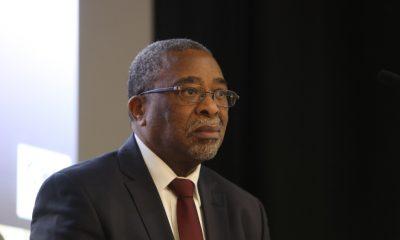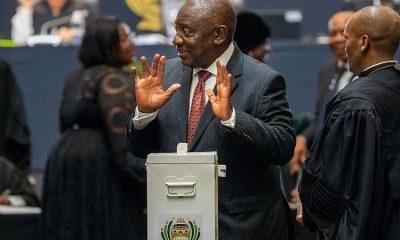411
Surprise Twist: How US Tariffs and a Looming Recession Could Trigger Interest Rate Cuts in South Africa

With Donald Trump’s controversial tariffs now in full effect, and recession fears mounting in the United States, economists are warning that interest rate cuts in South Africa may come faster and harder than previously expected.
The South African Reserve Bank (SARB) had adopted a cautious approach to rate reductions following years of inflationary pressure, but the global environment may now force a rethink.
The Trigger: Trump’s Tariffs and a Global Shock
President Donald Trump’s sweeping tariffs—labelled “reciprocal trade measures”—have sparked fresh instability. South Africa has been slapped with a punitive 31% tariff, despite US government data confirming that South Africa’s average tariffs on US goods are just 7.6%.
The justification? Trump claims countries that export more to the US than they import are “pillaging” America, applying a simplified formula to assign retaliatory tariffs. Economists call this “arithmetic delusion.”
While South Africa’s direct exposure to the US economy is limited—only around $2 to $9 billion in trade surplus depending on the data source—the impact will be felt hard in automotive and agricultural exports.
Exports like gold and metals are largely exempt, but the damage to select sectors is enough to dent economic growth forecasts.
US Recession Becomes the Base Case
Old Mutual’s Chief Economist Johann Els has now shifted his outlook, saying a US recession is his base case for 2025. This drastic turn is prompting talk of aggressive rate cuts from the US Federal Reserve, starting as soon as June.
“The Fed could slash rates by up to 125 basis points by year-end, front-loading cuts if needed,” said Els. The dollar is also expected to weaken, possibly reaching $1.20 to the euro by December.
What This Means for South Africa
If global rate cuts materialise and inflation in South Africa continues to drop, the SARB may have no choice but to follow suit.
The repo rate could drop below the current 7.5%, and the prime lending rate—now at 11%—could fall in tandem.
Inflationary pressures have eased, supported by stable oil prices. If inflation dips below 3% in the second quarter, the SARB could move sooner rather than later.
Els believes rate cuts could start from mid-2025, especially if global conditions deteriorate.
But There’s a Catch: The Rand and Political Instability
While global dynamics may support lower rates, the rand remains the key risk factor.
Despite a weakening US dollar, the rand has struggled—thanks in part to instability within South Africa’s Government of National Unity (GNU).
Cracks have emerged between the ANC and the DA, with the latter voting against the budget. Some economists warn that should the DA exit the GNU, the rand could crash to R22/$, driving up inflation and stifling any chance of rate cuts.
Els said investor confidence, already shaken, is at risk. “The uncertainty around the GNU’s future is a cause for concern,” he noted.
Hope for Cuts, but Risks Remain
South Africa may be heading into a more accommodative interest rate environment. But much depends on:
-
How fast and deep the US recession becomes
-
Whether global central banks react quickly
-
The political stability of the GNU
-
The rand’s trajectory in a turbulent global economy
For now, economists are watching closely—and borrowers can cautiously hope that relief may be on the horizon in the form of lower interest rates.
{Source BusinessTech}
Follow Joburg ETC on Facebook, Twitter , TikTok and Instagram
For more News in Johannesburg, visit joburgetc.com


























